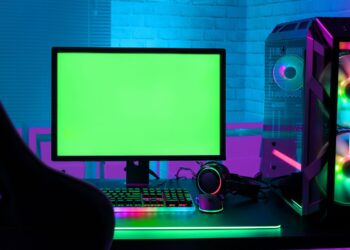A common stress test for video cards, FurMark is a popular program that uses OpenGL to render a simulated fur. It does not use any of the graphics card’s resources but only draws on the card’s CPU. The benchmarking tool has been in development since 2002 and is used by many PC gamers to determine whether their hardware can handle new games or upgrades well..
“Is FurMark a good stress test?” is a question that has been asked for years. It’s an open-source software, which means it is safe to use.
FurMark is a time-consuming OpenGL test that employs fur rendering methods to assess graphics card performance. Fur rendering is specifically designed to overheat the GPU, which is why FurMark is an excellent graphics card stability and stress test tool (also known as GPU burner).
How long does the FurMark stress test take in this case?
Stick to the regular burn-in test, but keep an eye on HWMonitor and/or SpeedFan—FurMark rapidly heats up your GPU. FurMark won’t take long to finish. It will crash or start throwing out weird visual abnormalities within 15 to 30 minutes if your graphics card is about to crash.
Also, what is the procedure for running a Heaven benchmark? Originally published on February 5, 2016.
- Begin by launching the Heaven application.
- Click the ‘Run’ button after selecting parameters that are similar to your typical gaming settings.
- To begin the test, click the ‘Benchmark’ button at the top of the window.
- Save your results after the test is finished.
How long should I stress test for?
While the exercise stress test takes around 10 to 15 minutes to complete, portion one of the exam takes about 30 to 45 minutes. Dr. Willke recommends scheduling most of your morning since you’ll need to return two hours later for follow-up images for the second half of the test.
What is the best way to test my CPU?
Head to Control Panel > System and Security > System to open it. You can also press Windows+Pause on your keyboard to instantly open this window. Your computer’s CPU model and speed are displayed to the right of “Processor” under the System heading.
Answers to Related Questions
What does the FurMark burn in test entail?
Description provided by the publisher. FurMark is a time-consuming OpenGL test that employs fur rendering methods to assess graphics card performance. GPU temperature monitoring and recording in a file in benchmark mode or stability / burn-in test mode (for overclockers).
What is the best way for me to test my computer?
Windows
- Start by pressing the Start button.
- Choose the Control Panel option.
- Choose a system. Some users may need to choose System and Security first, then System in the following box.
- Navigate to the General tab. Your processor type and speed, as well as the amount of memory (or RAM) and operating system, are all listed here.
What is the best way to test my graphics card?
The DirectX Diagnostic Tool is the simplest approach to determine your graphics card:
- Start by pressing the Start button.
- Click Run from the Start menu.
- Type “dxdiag” (without the quotation marks) in the Open box, then click OK.
- The DirectX Diagnostic Tool appears on the screen.
How can I tell if my graphics card is failing?
Symptoms of a failed video card
- While the video card is active with an application, such as when watching a movie or playing a game, screen glitches are common.
- When playing a game, stuttering is usually obvious.
- Screen glitches are comparable to artifacts.
- Video card problems are often manifested by increased fan speed.
How long should I put my GPU through its paces?
Congratulations for passing this test with your system! You should be good to go for almost anything. Actual games won’t tax your GPU as much as any of the Unigine tests, and an overclock that lasts for 8 hours under high load is regarded quite reliable.
What is the best way to test my RAM?
To use the Windows Memory Diagnostic tool, go to the Start menu and enter “Windows Memory Diagnostic.” You may alternatively hit Windows Key + R, then enter “mdsched.exe” into the Run dialog box that displays. To run the test, you’ll need to restart your computer.
What is a cardiac stress test?
What is a stress test and how does it work? A stress test involves walking on a treadmill while your heart works harder and harder. The electrical rhythms of your heart are monitored using an electrocardiogram (ECG). The doctor will also check your blood pressure and see if you have any symptoms like chest pain or exhaustion.
What is Rog FurMark, exactly?
FurMark ROG Edition is a highly modified version of the renowned FurMark program designed specifically for ASUS. Modern stress-tests and an artifact scanner based on OpenGL and Vulkan are included in the FurMark ROG Edition. FurMark ROG Edition allows you to evaluate your graphics card’s stability and thermal performance by pushing it to its maximum.
How can I check the stability of my GPU overclock?
Putting Your Graphics Card to the Test
- Increase the speed of your clock by 20-30%.
- Restart Heaven Benchmark 4.0.
- Complete all 26 scenes by pressing the benchmark button.
- If your computer does not crash or you observe no graphical defects, go back to step 1.
What is the best way to overclock my GPU?
How to Overclock Your Graphics Card
- Step 1: Make a comparison of your existing settings. Check your current performance with 3DMark or Furmark (the stress-testing programs we mentioned earlier):
- Step 2: Increase the GPU’s clock speed.
- Step 3: Increase the memory speed.
- Step 4: Fine-tune your work.
- Step 5: Increase the maximum power.
- Step 6: Fine-tune and test (again).
Is it safe to put a CPU through a stress test?
Stress tests push your PC’s performance to the maximum, increasing temperature and utilization metrics. A computer is deemed stable if it survives a stress test. PCs that are unstable will not operate as well as they should and may shut down. The function of automated shutdown protects PC components from harm.
What is the maximum temperature that a CPU may reach before it gets damaged?
Temperatures for overclocking could theoretically reach 90°C while remaining’safe,’ and the maximum temperature for many CPUs is listed in the 105-110°C range. However, for long-term usage, you should keep everything below 80°C in general, and only go up to 85°C at most.
How can I stop my CPU from overclocking?
Your PC should immediately boot into the BIOS menu after restarting:
- Toggle to the Advanced tab.
- Go to the Performance tab.
- Look for an option for overclocking.
- Make sure it’s turned off.
- If it’s on, turn it off.
- By pressing the F10 key, you may save your settings and leave BIOS. If you’re prompted to quit without saving the changes, choose Yes.
What is the duration of the aida64 stability test?
Please advise on how long to run, and by that I mean how long is long enough, assuming that one’s system is stable enough to manage it for more than 7 or 12 or 20 minutes.
How can I find out how many CPU cores I have?
Determine the number of cores in your CPU.
- To launch Task Manager, press Ctrl + Shift + Esc.
- To find out how many cores and logical processors your PC has, go to the Performance page.
Is MemTest86 64-bit compatible?
MemTest86 is the name of the original. Version 5 of MemTest86, on the other hand, adds a mouse-driven graphical user interface (GUI) as well as UEFI compatibility. These applications are compatible with practically all PC-compatible computers, ranging from 80386 and 80486-based systems to the most recent 64-bit processor-based systems.
Aida64 is a nice stress test, right?
AIDA64 Using Only Cache
With rising CPU cache capacity and surface area, this test becomes more intriguing. Overall, the cache workload in AIDA64 is a reasonable option for long-term runs on overclocked computers with a focus on stability rather than cooling performance.















